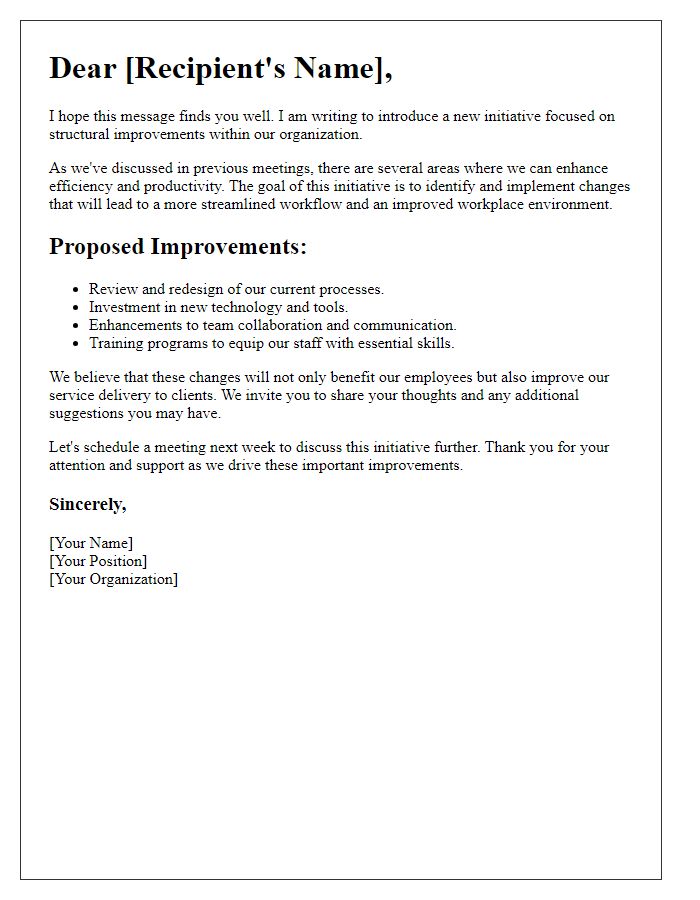Are you looking to enhance your property and increase its overall value? Writing a compelling proposal is key to communicating your vision effectively. In this article, we'll dive into essential elements to include in your property improvement proposal, ensuring it stands out to potential investors or decision-makers. So, grab a cup of coffee and let's explore the best practices together!

Clear Objective Statement
A clear objective statement serves as the foundation for a property improvement proposal, outlining specific goals and intended outcomes. The objective focuses on enhancing the property's overall value, increasing tenant satisfaction, or improving energy efficiency. For instance, the primary goal may be to upgrade the HVAC system to a more energy-efficient model, significantly reducing utility expenses for residents. Additionally, improving landscaping elements could enhance curb appeal, potentially increasing property desirability within the competitive real estate market. By clearly articulating these objectives, stakeholders can align their efforts, ensuring all proposed improvements directly contribute to the intended benefits while also addressing local regulations and sustainability practices.
Detailed Description of Improvements
This property improvement proposal outlines a comprehensive plan for enhancing the residential complex located at 101 Maple Avenue in Springfield. The proposed upgrades include the installation of energy-efficient LED lighting systems, which can decrease electricity usage by approximately 60%, significantly lowering utility bills for residents. Additionally, the renovation of common areas, such as the lobby and laundry room, will involve modernizing furniture and amenities, creating a more inviting atmosphere for community interactions. The landscaping redesign will introduce native plants, improving biodiversity and reducing maintenance costs. Furthermore, implementing a smart home technology package will offer features like automated thermostats and security systems, elevating residents' quality of life while adding value to the property. Each improvement aims to enhance functionality, aesthetics, and sustainability in alignment with contemporary living standards.
Budget and Cost Analysis
A detailed budget analysis for property improvement initiatives ensures an accurate understanding of potential expenses involved in enhancing residential or commercial real estate. Key cost components typically include materials (such as high-quality, durable construction supplies and finishes), labor (involving skilled workers with expertise in renovation), permits (necessary documentation required by local municipalities influencing project timelines), and contingency reserves (recommended allocation of approximately 10-15% of total budget to address unforeseen expenses). For example, a kitchen remodel may range between $10,000 and $50,000 depending on the size, complexity, and location (urban areas often commanding higher labor costs). Furthermore, thorough documentation of these expenses facilitates transparency in the project's financial framework and maximizes the return on investment by aligning improvements with market demands and property valuation trends.
Timeline for Implementation
A well-structured timeline for implementing property improvements is essential for smooth project execution. A thorough timeline outlines critical phases such as planning, approval, and construction to ensure clarity. The planning phase includes design consultations in November 2023, estimated to last two weeks. Following the planning phase, the approval process positions itself in December 2023, allowing three weeks for necessary permits and stakeholder sign-offs. The construction phase, projected for January 2024 to March 2024, encompasses various activities, including demolition, structural renovations, and finishing work. Weekly progress check-ins schedule throughout this period ensure adherence to milestones, adjusting timelines as needed. Final inspections and quality assurance checks are slated for late March 2024, enabling a swift transition to property management by April 2024.
Benefits and Impact Analysis
A property improvement proposal for a residential complex, such as Oakwood Meadows in Springfield, can yield significant benefits and measurable impacts. Enhancements, such as energy-efficient windows and updated HVAC systems, can reduce utility costs by up to 30%, creating long-term financial savings for residents. Additionally, improving communal areas, like the playground and swimming pool, can elevate property values by around 15% while fostering a sense of community engagement and satisfaction. Implementing sustainable landscaping, utilizing native plants, can also lead to a decrease in water consumption by approximately 40%, promoting environmental conservation. The proposal not only focuses on aesthetic upgrades but also emphasizes health benefits, as improved outdoor spaces encourage physical activity and social interaction among families residing in this neighborhood. Such strategic improvements can position Oakwood Meadows as a leading choice for families looking for comfortable and modern living spaces in a competitive real estate market.













Comments